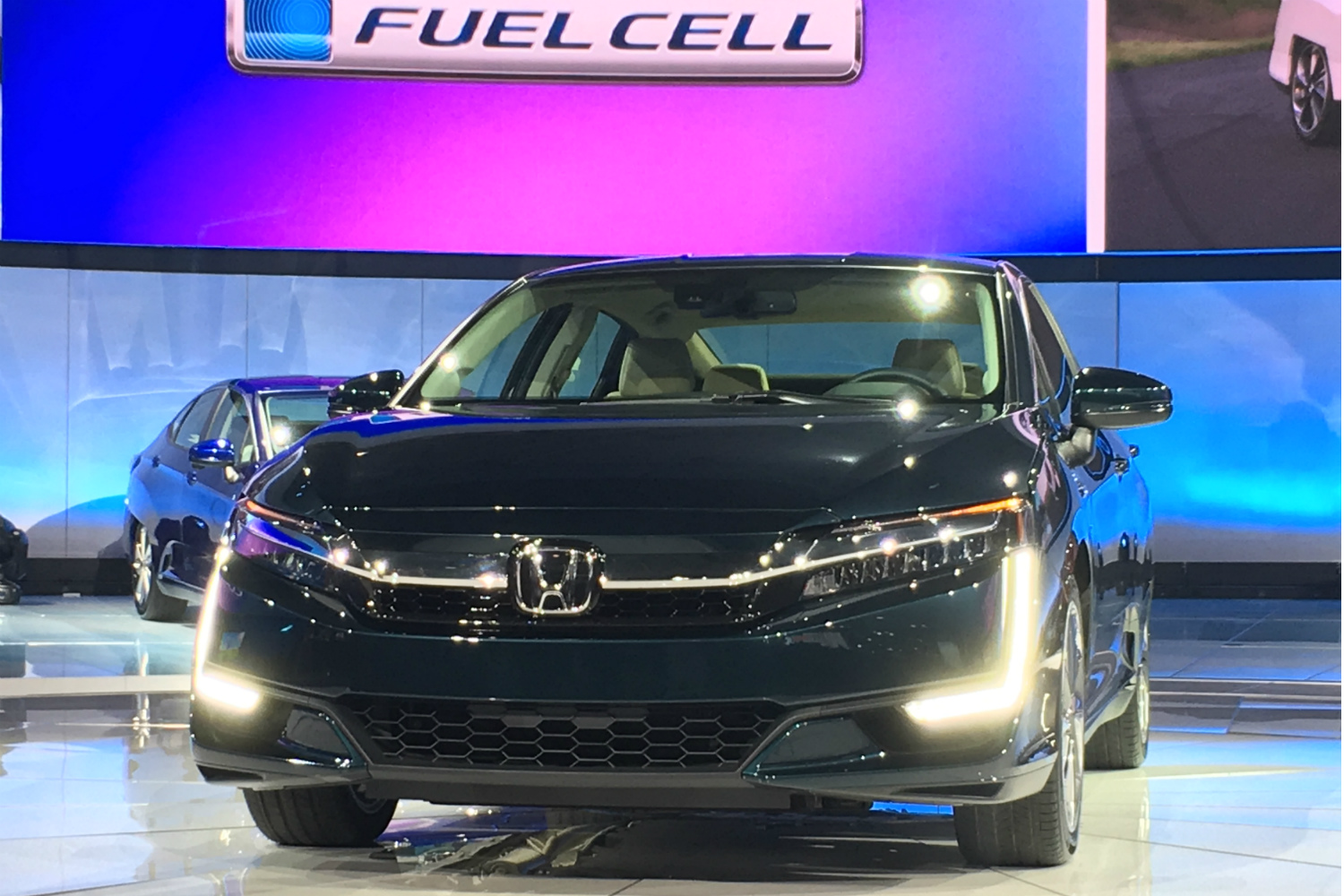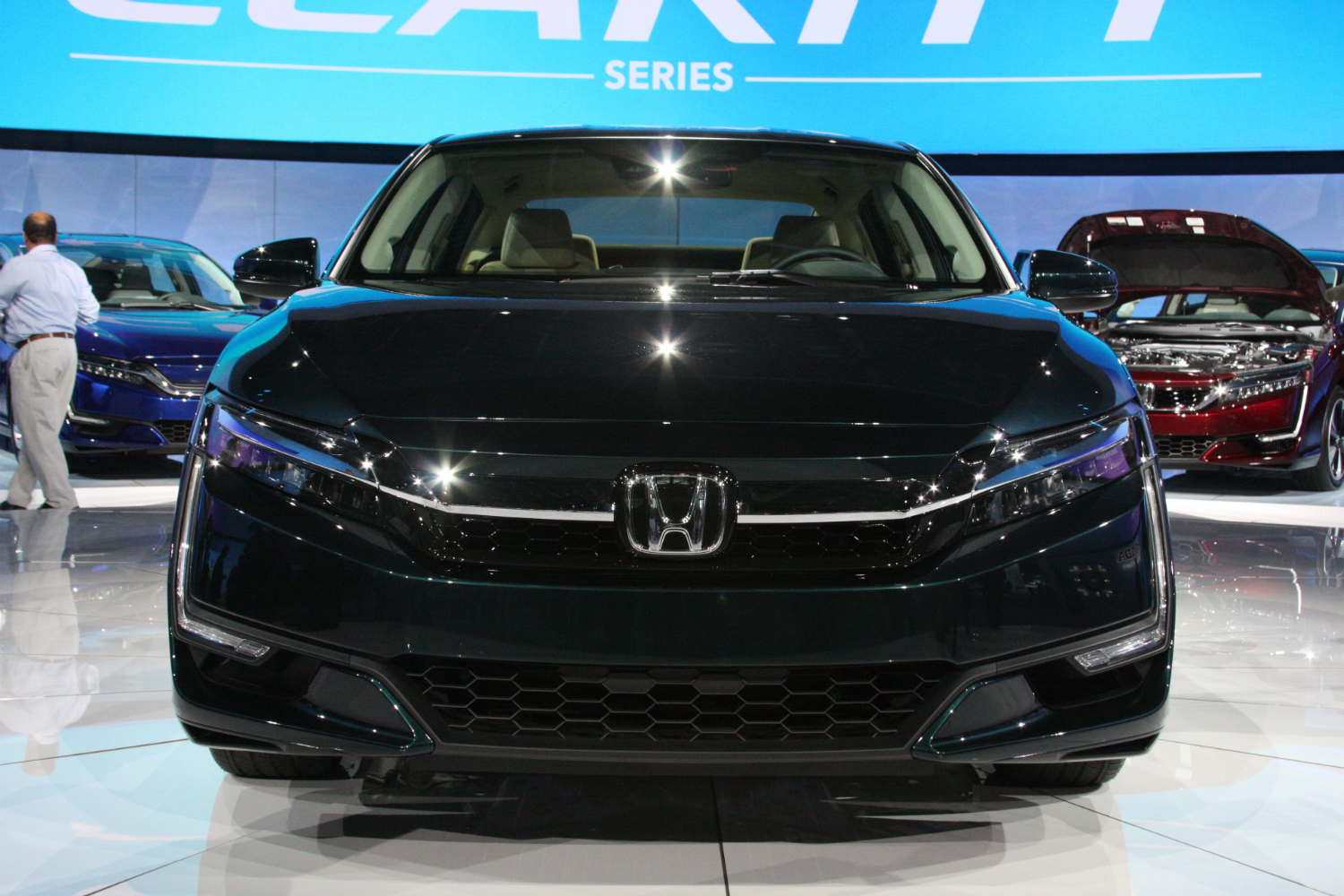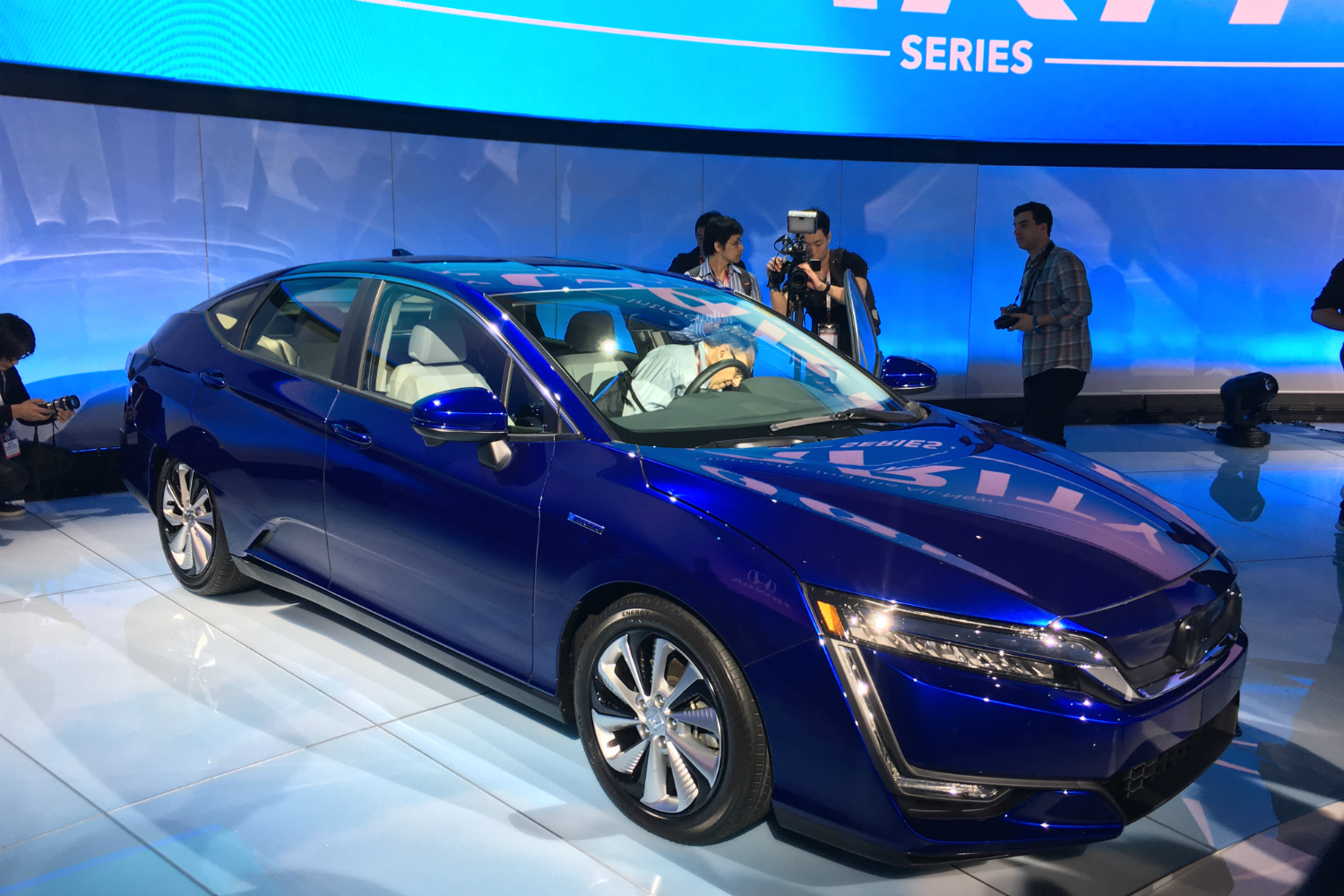When you think hybrid, you usually think Prius. That’s about to change, though, because Honda expanded its lineup of electrified cars at the annual New York Auto Show. Already offered with a futuristic hydrogen-powered drivetrain, the Clarity hatchback is now available as a pure electric car and as a plug-in hybrid.
All Clarity variants are characterized by the same polarizing design. The visual differences between the three cars include model-specific front ends, different 18-inch alloy wheels, and unique tail lights. They’re not exactly identical, but it takes a well-trained eye to tell the three Clarity hatchbacks apart.
It’s what’s under the skin that counts, and the Clarity is one of the most advanced cars Honda has ever built regardless of what fuels it.
The Clarity Plug-In Hybrid’s drivetrain consists of a 1.5-liter four-cylinder engine and an electric motor rated at 181 horsepower and 232 pound-feet of torque. The four-banger primarily serves as a generator, but it can drive the wheels directly under certain circumstances, though Honda hasn’t detailed those yet.
A 17kWh battery pack stores enough juice to power the sedan on its own for up to 42 miles. When electricity and gasoline join forces, the Clarity boasts a total driving range of over 330 miles and it returns an EPA-estimated 105 MPGe. Topping up the battery pack takes two and a half hours when the pack is plugged into a 240-volt charger.
The Clarity Electric relies on a 161-horsepower, 221-pound-feet electric motor that spins the front wheels. It’s linked to a 25.5-kWh battery pack that requires three hours to fully charge. The Electric is expected to earn a 111-MPGe rating, but Honda hasn’t revealed how far it can drive before the battery runs out of juice. However, recent reports point to merely 80 miles of range.
Both models offer three driving modes called Normal, Econ, and Sport, respectively, while the hybrid lets the driver save the battery’s full charge for later. Inside, there’s room for five passengers in a spacious, well-lit environment with wood trim and aluminum-look accents. Unlike the Prius, the Clarity is available with Android Auto and Apple CarPlay.
In the past, Toyota’s hybrids have always overshadowed rival models built by Honda. The company isn’t looking to beat the Prius in the sales race, but it hopes to sell 75,000 examples of the Clarity during the model’s first four years on the United States market. Pricing for the Clarity Electric has not been released yet, but the 2018 Clarity Plug-In Hybrid will start at $33,400 and go on sale December 1.
Update: We’ve added the MSRP for the 2018 Clarity Plug-In Hybrid.
















